Evaluating AMD's TrueAudio and Mantle Technologies with Thief
by Ryan Smith on March 18, 2014 1:15 AM ESTTrueAudio
Getting to what I feel is the more exciting aspect of today’s patch and driver release, we have our first look at AMD’s TrueAudio technology. To preface this with an appropriate degree of expectation management, nothing being presented with TrueAudio today is going to qualify as being all that groundbreaking. TrueAudio is an audio processing technology designed to offload advanced audio processing that could be done on the CPU, and in years past would have been handled on dedicated sound cards. To that end unlike the world of graphics where we’re usually talking about technologies and rendering techniques that are breaking new ground, TrueAudio is closer to a new way of retreading it.
The upside however is that TrueAudio is the first serious attempt in almost a decade to improve the quality and quantity of audio spatialization and effects on the PC. With Windows Vista having moved audio processing into software, and multi-platform titles (i.e. console ports) becoming increasingly common, PC audio has by most metrics regressed since the middle of the last decade. This has led to game audio ranging anywhere from good to terrible, depending on the capabilities of the audio stack used in a game. The best of games will offer a solid spatialization algorithm – and spend the CPU time to do it – while the worst of games will usually be optimized for a 2 and 5.1 speaker setups, mixing down from that for other setups while using minimal environmental processing and effects.
This is ultimately all work that could be done in the CPU, but good audio effects aren’t always cheap, and game developers as a whole have been apprehensive about dedicating significant CPU time to audio when they could be using it to improve graphics or lower the system requirements. In the meantime the launch of the current generation of consoles presents an interesting opportunity as those devices are equipped with dedicated audio DSPs – technology similar to TrueAudio in the case of the Playstation 4 – so offering DSPs in the PC offers the chance to piggyback on those developments. The end result is that for headphones gamers (such as myself), the combination of the new console generation and AMD’s push for better audio processing with TrueAudio offers the hope for an improvement in PC audio processing, and some neat hardware to back it up.
For our look at TrueAudio we’ll kick things off once again with Thief. As the first game to implement TrueAudio support it gives us our first chance to evaluate TrueAudio within a game, both from a performance standpoint and a quality/benefits standpoint.
With today’s patch Thief is gaining support for Convolution Reverb, which can be done in either software or the TrueAudio hardware. Convolution reverb is the only effect being offloaded – all other processing stays on the CPU – so what Thief will be showing off is only one possible use for the TrueAudio hardware. Unfortunately software convolution reverb processing doesn’t seem to be working at this time (see our sample below), so we can really only evaluate it running on TrueAudio versus the effect being disabled entirely. Accordingly, we can’t really measure the CPU performance costs of convolution reverb either, and our testing has found no performance hit from enabling the TrueAudio implementation.
Convolution reverb itself is a relatively simple effect that can quickly ramp up in processing requirements as the number of reflections increases. In convolution reverb a real world audio sample of an environment (the impulse response) is used to model how sound should reverberate through an artificial environment, essentially allowing games to mimic real world reverb by using the impulse response as a template. The quality of the effect in turn will depend on both the quality of the initial sample and how developers choose to use it, so unlike a modeled approach (e.g. real time ray casting) the accuracy of the effect is only as good as the inputs.
With that in mind, compared to graphics it’s much more difficult to objectively compare audio technologies. Convolution reverb’s simple nature naturally separates listeners into groups that either like the effect or don’t, but in either case it’s hard to argue that there’s a definitive answer. Not unlike something like G-Sync, all we can really do is offer some samples and discuss the experience, since we can’t fall back on hard numbers.
Convolution Reverb: Off, Software (broken), and TrueAudio
In our above sample we’re banging a knife on a brick wall, a simple but effective way to test with the effect enabled and disabled with a high degree of accuracy and repeatable. And having played through the first level of Thief with convolution reverb both on and off, I unfortunately find myself distinctly in the group of people who would find it unnatural. Throughout that section of the game, with reverb enabled many sounds come off as sounding out of place.
Now what is a Victorian Era alleyway supposed to sound like? I honestly have no idea, hence the subjective nature of it. But throughout Thief the effect feels overdone; every sound source affected by reverb seems to have too much of the effect, from NPCs talking to weapons striking. Without convolution reverb there’s a very noticeable lack of reverb altogether, but with it turned on I can’t shake the impression that there’s now too much reverb.
Ultimately I’m not sure if there really is too much reverb in Thief, or if it’s in my head (figuratively speaking). Have I just grown too used to games that are light on reverb, and now that I’m playing a game with convolution reverb it’s merely not what I’m used to? Or is it really overdone, if only to show off the technology and to make sure it’s noticed?
As a graphics and GPU guy, it reminds me a lot about the debate about film frame rates. I for one find 24fps material jerky, blurry, and blatantly unnatural. And yet most people around me would say that it’s high frame rate material that’s unnatural, as they have become accustomed to 24fps films and anything above that breaks their perception since it’s not what they’ve come to expect. I’m left to wonder if I’m in a similar situation, except for audio.
In any case, on a purely subjective evaluation, I don’t feel that Thief is a strong showcase for TrueAudio. The question isn’t one of technical merit – audio DSPs aren’t new and have proven their value – but rather whether the game is a good example of what the technology can do and how it’s used. And since Thief only uses it for convolution reverb, and I feel uses that reverb too heavily, I would most likely play with the effect turned off, thereby bypassing the TrueAudio hardware entirely. As just one game out of what will hopefully be many more I won’t base my entire opinion on TrueAudio off of this one game, but at the end of the day it’s not the strongest argument for TrueAudio. Hopefully future games put it to better use, both in terms of using the hardware for more types of processing, and not overdoing the reverb as is occurring here. To draw a historical parallel, for anyone that was around back in 2001 to play the original Unreal Tournament with the EAX patch, Thief’s additional of reverb feels a lot like the unnatural reverb that occurred on several of UT’s maps.
Tuscany
With that in mind though, Thief isn’t the only sample of TrueAudio for today. AMD is also releasing one of their in-house demos today for public consumption, and this is a demo that I feel is a much better example of TrueAudio’s potential.
Set in a simple simulation of a Tuscany villa, the aptly named Tuscany demo is a short but effective demonstration of TrueAudio in action. Built in Unity and using GenAudio’s AstroundSound 3D RTI plugin, the Tuscany demo is a combination TrueAudio and Occulus Rift demo. On the visual side it offers input and output support for Occulus’s 3D headset (though it works with regular setups relatively well), while on the audio side it implements AstroundSound’s 3D audio spatialization algorithms on the TrueAudio hardware. Tuscany uses a number of sound sources, all of which are processed by the TrueAudio hardware to do elevation, distance, and positioning spatialization.
This is recorded directly from our Tuscany walk-through, so if you’re listening on headphones without any processing, this should sound exactly like it did for us
As we alluded to at the start of this section, audio spatialization is nothing new. However relatively few games do a good job of it, and even fewer do a good job of it on headphones. So to have a demo utilizing full spatialization, doing it well, and doing it in hardware is quite refreshing compared to what we see with most games.
But with that in mind, the Tuscany demo doesn’t really lend itself to comparison. It doesn’t work without the TrueAudio hardware and it doesn’t support other types of hardware, so we can’t compare it to remaining hardware solutions such as Creative’s SoundBlaster or Asus’s Xonar parts, or even to post-processing technologies such as Dolby Laboratories Dolby Headphone technology. That said, to get back to subjective opinions, I feel like AstroundSound 3D implementation in Tuscany is similarly accurate and realistic as (if not better than) any Asus or Creative solution I’ve tried in the past. Reverb aside, as a gamer I’d first like to see better spatialization in games, and this I feel is an example of where it’s done right both for quality and for making use of the underlying hardware.
Final Thoughts
Wrapping things up, even with the launch of Thief I’m not sure much has changed for TrueAudio at the moment. Subjectively speaking, Thief’s convolution reverb effect just isn’t that impressive due to how overdone it feels, so while it shows us a bit of what the TrueAudio hardware is capable of it’s nowhere near being the killer app for the technology. On the other hand the Tuscany demo, though just a simple spatialization demo, is very impressive for how accurate and realistic it sounds. The catch is that it’s just a demo.
As such the ultimate value of TrueAudio remains to be seen. Even if AMD can get game developers and middleware developers to support TrueAudio, they need to be putting it to good use to make it worth using, and more importantly valuable enough to justify purchasing an AMD video card over an NVIDIA video card. This is a problem I feel NVIDIA has yet to solve with PhysX even after all of these years – it’s still rarely used, and doesn’t seem to influence many gamers – and while it’s far too early to declare TrueAudio’s fate I can certainly see it ending up in a similar rut. Or widely adopted, or not adopted at all as the case may be. But for the time we have finally seen that the hardware is capable of delivering on its premise and its promise, so long as there are developers out there willing and able to put it to good use.


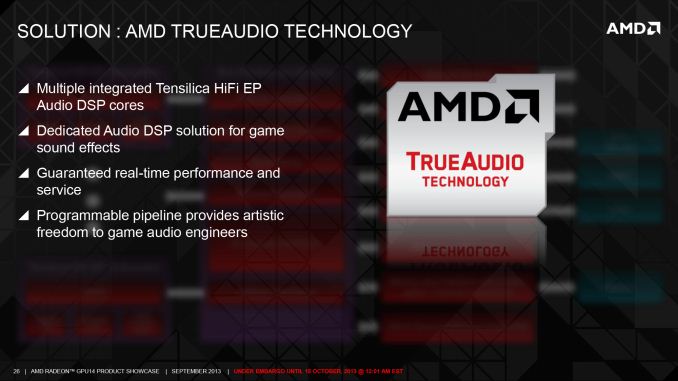
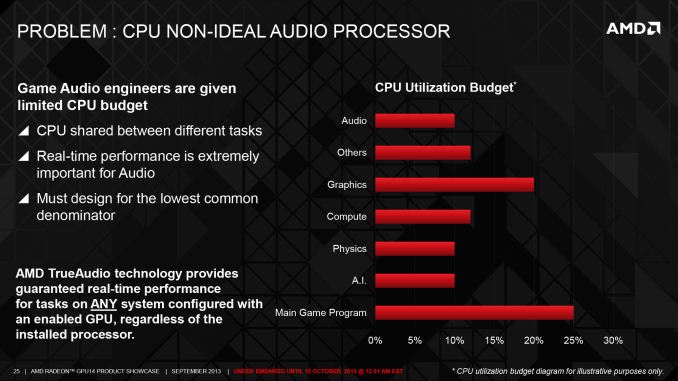
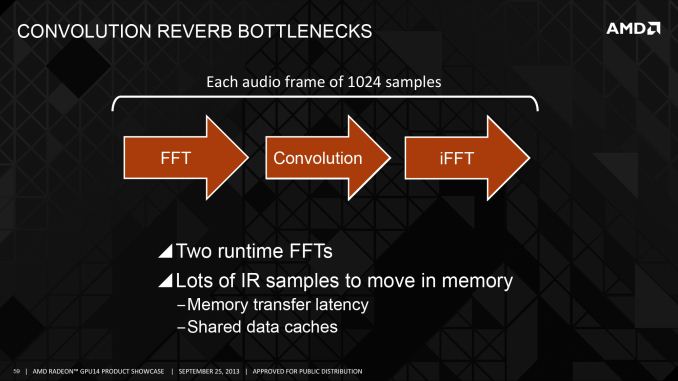
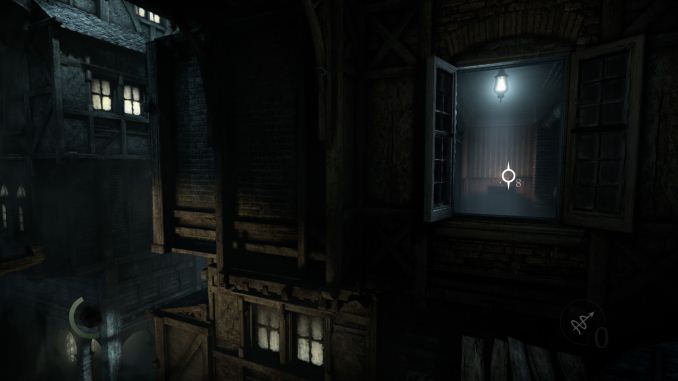
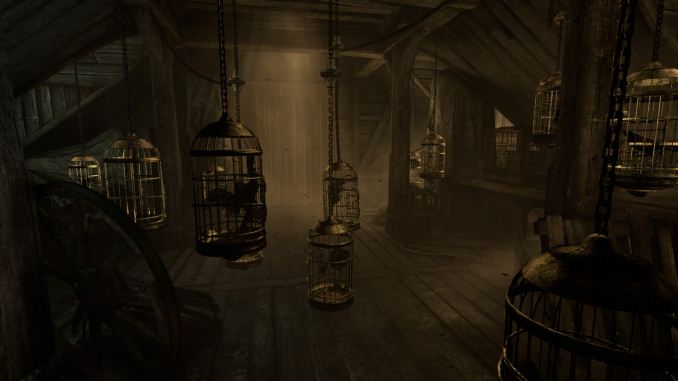
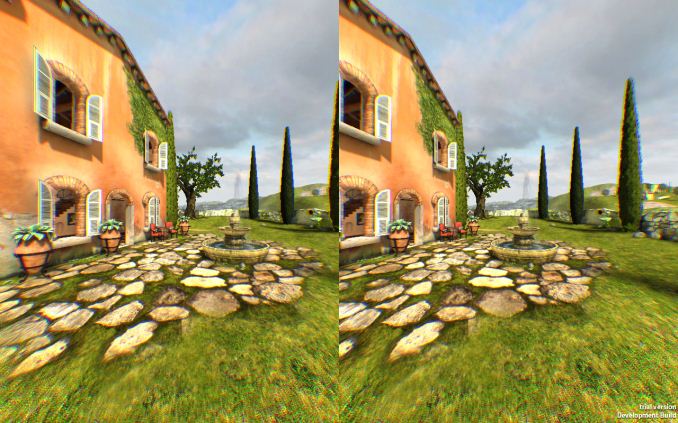
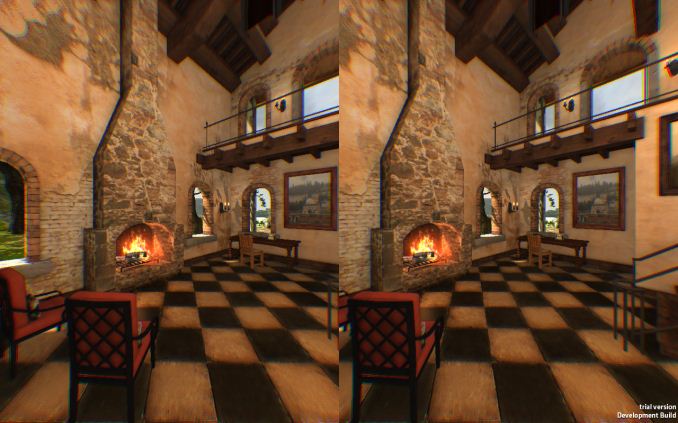








75 Comments
View All Comments
blanarahul - Tuesday, March 18, 2014 - link
Ryan, why don't use measure GPU power consumption like W1zzard from TechPowerUp!.Ryan Smith - Tuesday, March 18, 2014 - link
On this article or in general?In general we do a system wide measurement because we use a closed testbed, which means it's impractical to tap to measure the individual lines.
On this article in particular we were only doing a (relatively) short overview on performance. There wasn't time to look at much else.
TheElMoIsEviL - Thursday, March 20, 2014 - link
"Ryan, Why don't you talk about how great nVIDIA is and how much AMD sucks? I mean I realize that when AMD had better power consumption, I cheered on the Geforce GTX 480, because I'm dishonest like that, but now that nVIDIA has better power/heat levels I have decided that these things matter"Is how I interpreted your post blanarahul.
Le Québécois - Tuesday, March 18, 2014 - link
When can we expect a full article/review on Mantle? So far we're seen preview for Thief and BF4 but not full detailed 20 pages or so review on the thing. I use it on my 7970 GHz and it seems fast and stable but it could also just be my imagination tricking me with a "placebo" effect.nathanddrews - Tuesday, March 18, 2014 - link
Definitely should be some slower CPUs in the testing. Pentium G-series, maybe a C2D/Q. I've seen claims of 50-to-300% gains on forums (with numbers to back it up). for max, average, and minimum frame rates. Even AMD's press coverage made it known that the fastest CPUs wouldn't gain much (maybe 5%), so it would seem fitting to run tests using low-to-mid range hardware.rms - Tuesday, March 18, 2014 - link
Definitely. On my 6core phenom2 & 290X, I doubled my minimum framerate, and nearly doubled the average. Why would the only graph be with a high-end overclocked intel cpu that shows minimal gains?Ammaross - Tuesday, March 18, 2014 - link
I would think an AMD APU akin to the one(s) found in the XBone and PS4 would be a REQUIREMENT for any and all games testing (at least for PC-ports).mikato - Thursday, March 20, 2014 - link
I agree. Using a very high end CPU and just cutting cores and clock rate doesn't give us much hint of the point behind Mantle.Ryan, you wrote the Mantle portion like you expected everyone to have a high end CPU. I know you tested for lower CPU performance, but that's the angle of the article. See below...
"The gains at the high end aren’t worth writing home about, but since we need the CPU to churn out a fairly high framerate regardless, there’s a much greater opportunity to benefit from Mantle on lower end Intel CPUs and AMD’s CPUs/APUs."
So you're thinking is "does Mantle help, and how much?". That question doesn't cover the whole picture. Mantle may lead to purchasing decisions. Someone could buy a lesser CPU and still get close to higher end CPU performance because of Mantle. What about that? I agree that including some lesser CPUs in the testing would really be needed for this as well.
I also have to say, what a lovely sound demo!
savage.r - Friday, April 4, 2014 - link
Of course it should, todays games are made for todays HW and API, means mantle cannot bring performance improvement if game itself doesn't need more. Only way is to use much slower IPC and more cores, still most improvements will see when optimized games will be made from ground up, like star swarm demo, I have 300% FPS there in RTS view. PS4/XBOX uses 8core jaguar architecture, same is used in ultrathins and tablets! CPU with few times higher TDP/ IPC and even less cores, cannot be even remotely comparable to that. But it proofs that today's CPU have much more performance than we really need since all todays games cannot optimally use more than 1core anyway.Wreckage - Tuesday, March 18, 2014 - link
Mantle is still beta and has yet to be shipped with a game. Give it a few years